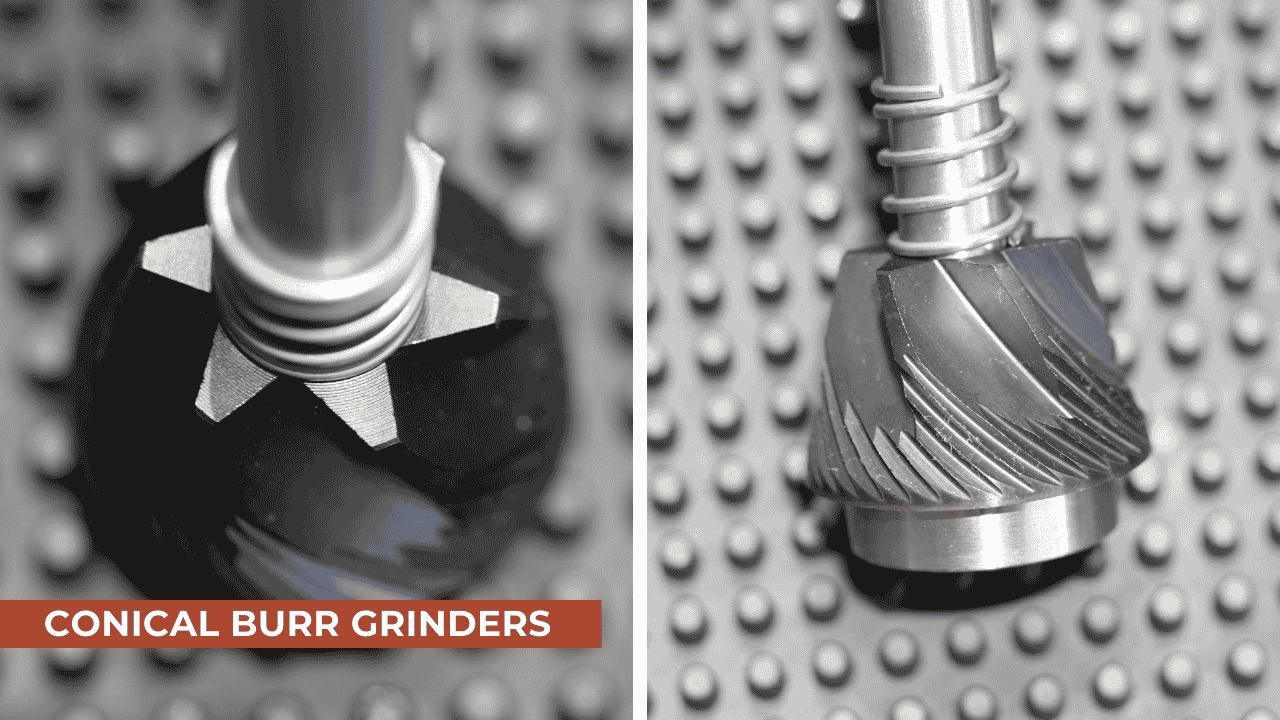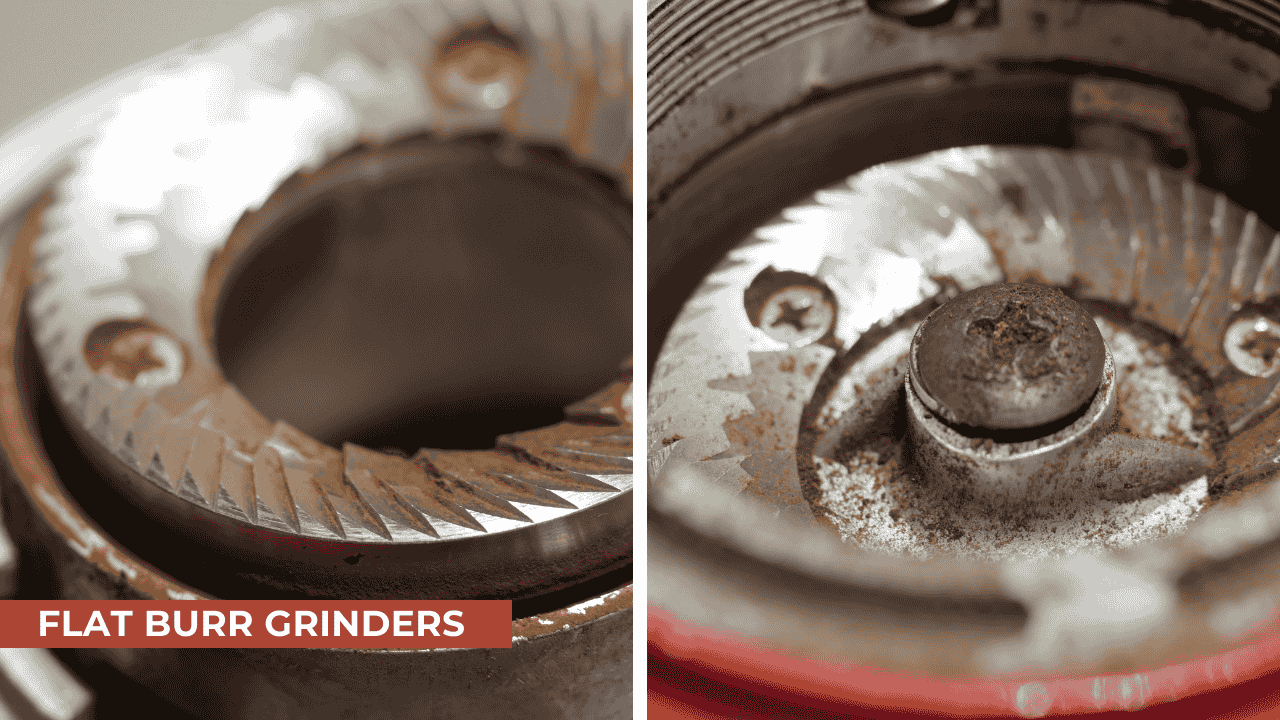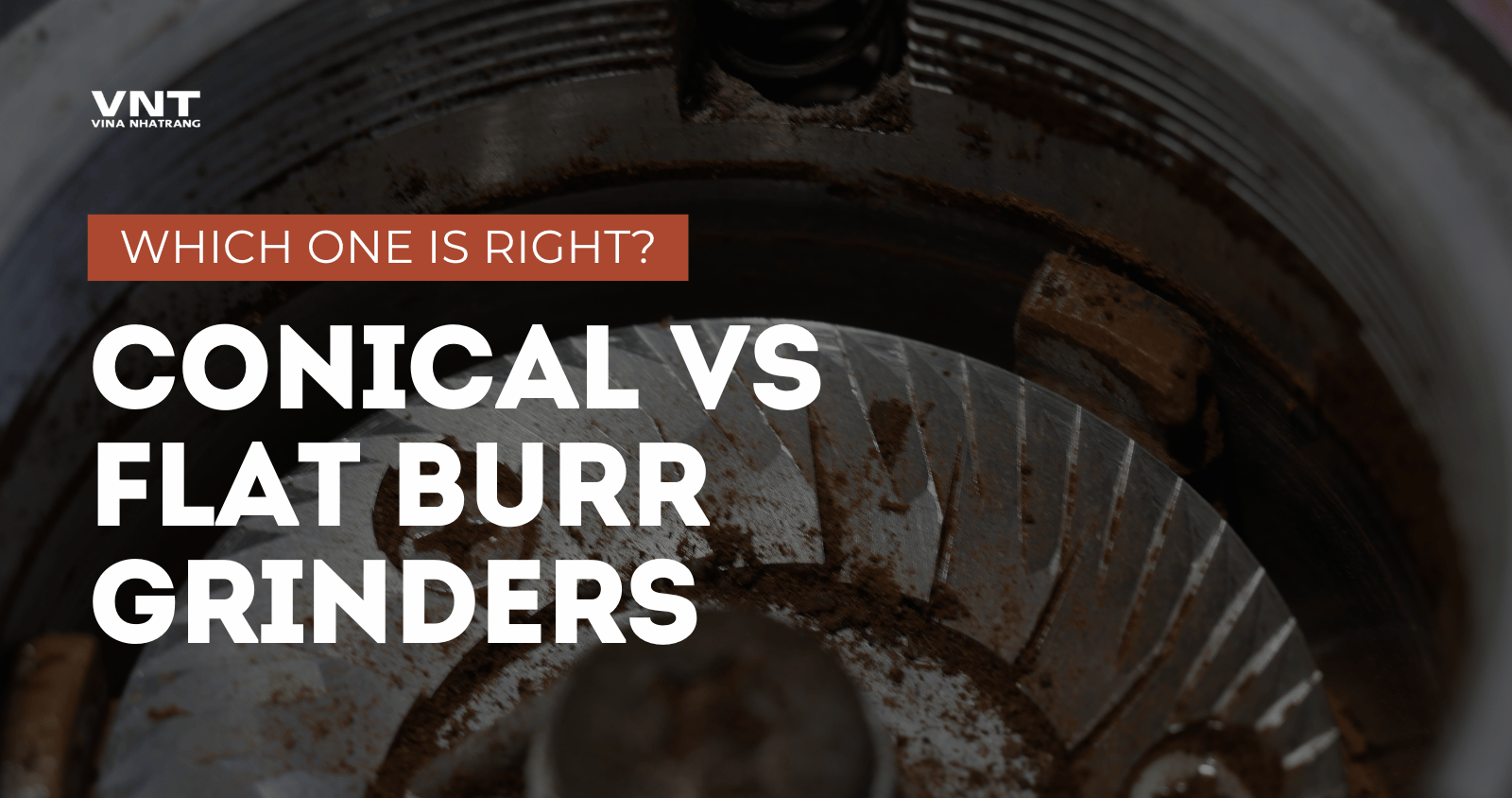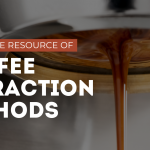If you’re serious about coffee, the type of grinder you use can make a world of difference in the quality of your brew. Two popular types of coffee grinders are conical burr grinders and flat burr grinders—each offering unique advantages and drawbacks. But how do you decide which one is right for your needs? Are you looking for precision, consistency, or perhaps a quieter grind? Or maybe you’re just trying to elevate your morning cup of coffee? In this guide, we’ll dive into the key differences between conical and flat burr grinders, weigh their pros and cons, and help you make the best choice for your coffee routine.
Why Does the Type of Burr Matter?
When it comes to grinding coffee, precision and consistency are everything. That’s where burr grinders come into play. Unlike blade grinders, which chop beans unevenly, burr grinders crush the beans between two grinding surfaces (burrs) to achieve a more uniform consistency. However, there are two distinct types of burrs: conical and flat.
Whether you’re grinding for espresso, French press, or drip coffee, understanding the differences can drastically improve your coffee experience. But before we get into the details, let’s break down the basics.
Conical Burr Grinder: The Quiet, Slow and Steady Champion
What is a Conical Burr Grinder? A conical burr grinder features two burrs—one shaped like a cone and the other shaped like a ring. Beans are fed through the top burr and into the lower burr, where they are ground into a fine powder. This type of burr grinder is designed to create an efficient and even grind by gradually breaking down the coffee beans.
Pros of Conical Burr Grinders:
- Quieter Grinding: Conical burr grinders tend to operate much more quietly than flat burr grinders, which can be an important consideration if you’re grinding early in the morning or in a shared space.
- Better for Low-Speed Grinding: The conical design tends to create less heat and friction, which means the coffee beans retain more of their natural oils and flavors.
- Durability: Conical burrs typically wear down less quickly than flat burrs, which means they can last longer.
- Versatility: These grinders are ideal for a wide range of brewing methods, from espresso to French press, making them an excellent all-rounder.
- Less Mess: Conical grinders are generally less messy than flat grinders. The design of the burrs reduces the amount of static and grounds that can scatter.
Cons of Conical Burr Grinders:
- Slower Grinding Speed: Due to the shape and operation of the burrs, conical burr grinders tend to grind coffee more slowly than their flat burr counterparts.
- Less Precision: While conical burrs do a great job of producing consistent grounds, they are not as precise as flat burrs when it comes to achieving extremely fine or uniform grinds for espresso.

Flat Burr Grinder: The Speedy Precision Powerhouse
What is a Flat Burr Grinder? Flat burr grinders consist of two parallel burrs that are positioned flat against each other. The beans are ground between the two flat surfaces, and the grounds are dispensed in a more uniform manner. This design allows for a faster, more precise grind that many professionals swear by.
Pros of Flat Burr Grinders:
- Superior Consistency: Flat burr grinders provide extremely uniform grind sizes, making them ideal for espresso lovers who want to extract the best flavors and aromas.
- Faster Grinding: Flat burr grinders are quicker than their conical counterparts, which means you can grind more beans in a shorter amount of time.
- Ideal for Espresso: The precision and consistency of flat burrs make them the top choice for brewing espresso, where a consistent grind size is critical.
- Minimal Retention: Flat burr grinders tend to retain fewer coffee grounds between the burrs, leading to cleaner grinds with less waste.
Cons of Flat Burr Grinders:
- Noisy Operation: Flat burr grinders tend to produce a louder, more noticeable grinding noise due to the speed and efficiency of their design.
- Higher Price: Flat burr grinders are typically more expensive than conical burr grinders, especially in the high-end market.
- Heat Buildup: The fast grinding speed can generate heat, which may cause the coffee beans to lose some of their delicate oils and flavors, affecting the taste.

Key Differences Between Conical and Flat Burr Grinders
To make your decision easier, let’s compare conical vs flat burr grinders head-to-head across several important factors:
| Factor | Conical Burr Grinder | Flat Burr Grinder |
|---|---|---|
| Grinding Speed | Slower but steady | Faster, more efficient |
| Grind Consistency | Less precise but good for most brewing methods | Extremely uniform, especially for espresso |
| Noise Level | Quieter, ideal for morning use | Louder, especially at high speeds |
| Price | Generally more affordable | Tends to be more expensive |
| Heat Generation | Less heat, better preservation of flavor | More heat, potential flavor loss |
| Versatility | Great for multiple brew methods | Best for espresso and similar methods |
| Durability | Highly durable and long-lasting | Can wear out more quickly depending on use |
Which Grinder is Best for You?
Now that we’ve broken down the key differences between conical and flat burr grinders, let’s address some common questions that will help guide your purchase.
1. Should I Buy a Conical or Flat Burr Grinder for Espresso?
- If you’re passionate about espresso, flat burr grinders are likely your best bet. Their ability to grind consistently and precisely is unmatched, especially for espresso, where grind consistency is crucial for optimal extraction. However, if you’re on a budget or don’t mind taking a bit longer to grind, a conical burr grinder will still provide a very good result.
2. Which Grinder is Quieter?
- For those sensitive to noise, a conical burr grinder is the clear winner. The slower grind speed and design lead to quieter operation, making it an excellent choice for early mornings or shared spaces.
3. Do Conical Burr Grinders Create Less Heat?
- Yes! Conical burr grinders generate significantly less heat during the grinding process, preserving the natural oils and flavors in your coffee beans. This is particularly important if you’re grinding for a method that emphasizes flavor, such as pour-over or French press.
4. Are Flat Burr Grinders Worth the Extra Cost?
- If you’re looking for absolute precision and don’t mind the higher price tag, a flat burr grinder is worth the investment—especially for espresso enthusiasts. However, for more casual coffee drinkers, the conical burr grinder offers excellent performance at a lower cost.
5. Is One Grinder Better for Multiple Brewing Methods?
- Conical burr grinders tend to be more versatile and suitable for a wider range of brewing methods, from drip coffee to French press. If you enjoy experimenting with different brewing styles, a conical grinder may be your best all-rounder.
Conclusion: Your Perfect Grinder Awaits
Choosing between a conical vs flat burr grinder ultimately depends on your specific coffee preferences, brewing methods, and budget. If you value versatility, quieter operation, and longer-lasting durability, a conical burr grinder is a great choice. On the other hand, if you prioritize precision, consistency, and espresso performance, then a flat burr grinder is likely the better investment.
No matter which grinder you choose, rest assured that either option will help elevate your coffee game to new heights. The right grinder can unlock the full potential of your coffee beans, ensuring each cup is as flavorful, rich, and satisfying as possible.
Remember, when it comes to coffee, every detail matters—so choose the grinder that fits your unique needs and taste. Happy brewing!
Actionable Tip: Whether you go with a conical or flat burr grinder, always make sure your grind size matches your brewing method for optimal results!




